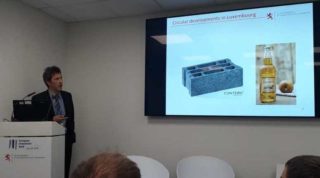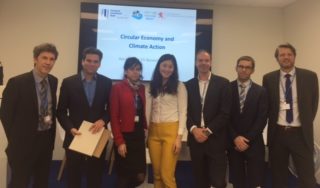Circular economy for positive climate action
November 17, 2017Circular BlogOther projects0
Luxembourg is the biggest Greenhouse Gas (GHG)/capita emitter in the European Union, with main emissions stemming from transport (fuel), industry, households (including retail and service). An important contribution to GHG emissions which is less visible and more difficult to quantify and track is, however, the energy and thus the emissions embedded in products. These emissions arise during the extraction and processing of raw materials, e.g. cement, steel or glass for construction materials, which are all very energy intense in production.
The systemic collaboration principles and the virtuous cycles of the circular economy (CE) can considerably contribute to reducing the energy demand for production and consumption, by maintaining products, components and materials at their highest quality and value during the various use phases. Energy, embedded into this products and components, is, thus, conserved over longer time periods and not unnecessarily wasted, resulting in the simple formula:
Material savings = energy savings!
+ImpaKT was invited to present CE case studies from Luxembourg and underlying strategies at a side event of the COP23 – UN Climate Change Conference in Bonn, hosted by the Luxembourg Ministry for Sustainable Development and the European Investment Bank, on 15 November 2017. Dr. Paul Schosseler illustrated in his presentation, together with innovative CE companies, how CE can boost climate action, not in a business-as-usual way, but by fundamentally tackling resource and material management and considerably reducing embedded enery losses.
More guidance on the topic can also be found in the comprehensive report “Policy Levers for a Low-Carbon Circular Economy” by Circle Economy, also presented at the COP23.


